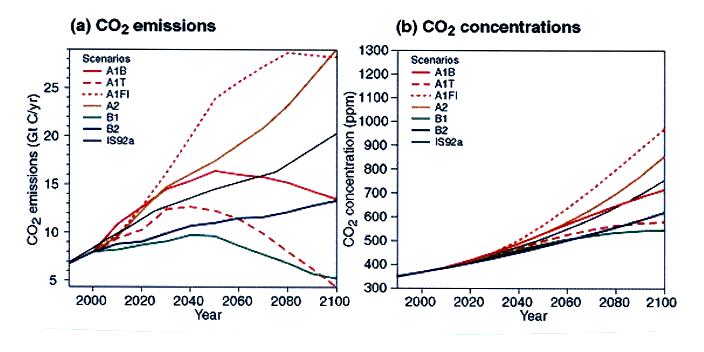
Atmospheric carbon dioxide concentrations are currently about 385 ppm (ppm stands for parts per million, 385 ppm is equivalent to 0.0385% concentration). The computer model predictions above show that this could increase to between about 550 and 950 ppm by 2100 (source). The amount of increase will depend on future changes in population and how quickly we can develop new technologies and shift to alternative sources of energy (the various scenarios used in the predictions are described in more detail here).
The right graph above shows that atmospheric CO2 concentration keeps increasing for the next century even with fairly significant cuts in CO2 emission amounts during the next century. To see when atmospheric CO2 amounts might eventually stabilize at a constant level you need to look further out in time as in the figure below (created by Robert A. Rohde for Global Warming Art).









